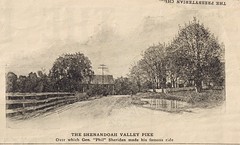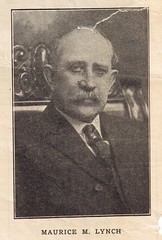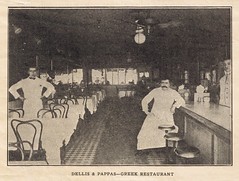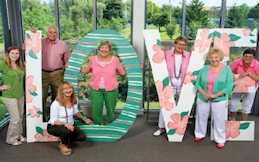 From Shenandoah Valley Battlefields Foundation comes a roster of events this weekend, Aug. 16, 17 and 18. Events focus on Lee’s Gettysburg Campaign – and the sobering aftermath that turned the region into a mammoth hospital. Programs will include living history, tours, historical talks, book signings, youth programs – and even a special screening of an American movie classic. You’re sure to find something that appeals to your interests this weekend!
From Shenandoah Valley Battlefields Foundation comes a roster of events this weekend, Aug. 16, 17 and 18. Events focus on Lee’s Gettysburg Campaign – and the sobering aftermath that turned the region into a mammoth hospital. Programs will include living history, tours, historical talks, book signings, youth programs – and even a special screening of an American movie classic. You’re sure to find something that appeals to your interests this weekend!
Review the flyer for Civil War Weekend at the Winchester-Frederick County Convention and Visitor’s Bureau website for any of the events below which catch your fancy:
Visitor Information, Civil War Orientation, and Book Signing at Winchester-Frederick County Visitors Center
Location: 1400 S. Pleasant Valley Rd., Winchester
Times: Open: 9 am – 5 pm daily
Book signing with Scott Patchan, author of “The Last Battle of Winchester” 3-5pm on Saturday
For more information or a free visitors guide: (540) 542-1326, info@visitwinchesterva.com, or www.VisitWinchesterVA.com
Tours of Belle Grove Plantation, Middletown
Location: 336 Belle Grove Rd., Middletown
Times: Saturday, August 17: 10:15, 11:15, 12:15, 1:15, 2:15, 3:15. Sunday, August 18: 1:15, 2:15, 3:15
Cost: $12
For more information: 540-869-2028
“Following the Plume”: Confederate Cavalry Living History Program
Location: Cedar Creek Visitor’s Center, 8437 Valley Pike, Middletown
Times: Saturday, August 17, 10am-4pm. Cavalry demonstrations at 11am, 1pm, and 3pm. Intermittent artillery demonstrations on Saturday and Sunday.
Cost: Free
For more information: (540) 869-2064 or executive.director@ccbf.us
Lectures and Book Signing: “The Transition Begins: For Whose Rights Are We Fighting”
Location: Stephens City Town Office, 1033 Locust St., Stephens City
Times: Saturday, June 23 – 11am and 2 pm (lectures) and 3pm (book signing)
Cost: Free
For more information: Wayne A. Eldred, (540) 869-1700, info@newtownhistorycenter.org.
Tours of First and Second Battles of Kernstown at Pritchard-Grim Farm
Location: Kernstown Battlefield on the Pritchard-Grim Farm, 610 Battle Park Drive, Winchester
Times: Saturday, August 17, 11am and 1pm (walking tours)
Cost: Free admission to site. $3 charge to tour Pritchard House.
For more information: (540) 869-2896 or gcrawford@kernstownbattle.org
“Night Falls on Camp Johnson”: Living History and Activities Tours
Location: 901 Amherst St., Winchester
Times: Saturday, August 17, 6-9 pm
Cost: $5 to MSV members, $8 others, children under 12 are free.
For more information: (888) 556-5799
Book Signing: Civil War Journal of Mary Greenhow Lee
Location: Hollingsworth Mill, 1360 S. Pleasant Valley Rd., Winchester
Times: Saturday, August 17, 2-4 pm
Cost: Free
For more information: Cissy Shull, 540-662-6550 or wfchs@verizon.net
Civil War Medical Lectures by Dr. Yusuf Saleeby
Times: 10-11:30am and 2-3:30pm
Location: 20 N. Loudon St., Winchester
For more information: 540-542-1145, www.civilwarmuseum.org
“Gone With the Wind” Under the Stars
Location: Historic Long Branch, 830 Long Branch Lane
Times: 6:30-11:30 pm. Movie at 8:00 pm.
Cost: $8 per car
For more information: 540-837-1856
Tours of Sheridan’s Field Hospital: Dr. Jonathan O’Neal
Location: Sheridan’s Field Hospital at Shawnee Springs, corner of Opequon Avenue and Hollingsworth Drive
Time: Saturday, August 17, 10am-2pm
Cost: Free
For more information: Terry Heder, 540-740-4545 or theder@svbf.net
Cedar Creek and Belle Grove National Historical Park Programs
Friday, August 16:
History at Sunset – The Tragic Deaths of Stephen Ramseur and Charles Lowell: Examples of a Generation Lost.
7 p.m. Meet Ranger at Belle Grove parking lot, 336 Belle Grove Road.
Saturday, August 17:
Cedar Creek and Belle Grove in a Box – A Park Overview Program. 30 minute program on the history of the Valley, the Battle of Cedar Creek and the impact of the war. 11:30 a.m. Meet on Belle Grove’s front lawn, 336 Belle Grove Road.
Battle of Cedar Creek Tour. A two-hour guided tour that which covers the Battle of Cedar Creek in a chronological fashion. 2pm. Meet at Cedar Creek Battlefield Foundation Headquarters, 8437 Valley Pike.
Middletown Civil War Walking Tour. Learn about the citizens of Middletown and how the war impacted their lives. A ranger-led 90 minute walking tour. 5pm. Meet at intersection of Main Street and First Street.
Sunday, August 18:
The 8th Vermont Monument at Cedar Creek. Visit the monument and learn the story of the New England regiment it memorializes. 1 pm. Meet at National Park Service Visitor Contact Station, 7712 Main Street.
Presented by: Cedar Creek and Belle Grove National Historical Park
Cost: All programs are free
For more information: Eric Campbell, 540-8693051 or eric_campbell@nps.gov

















